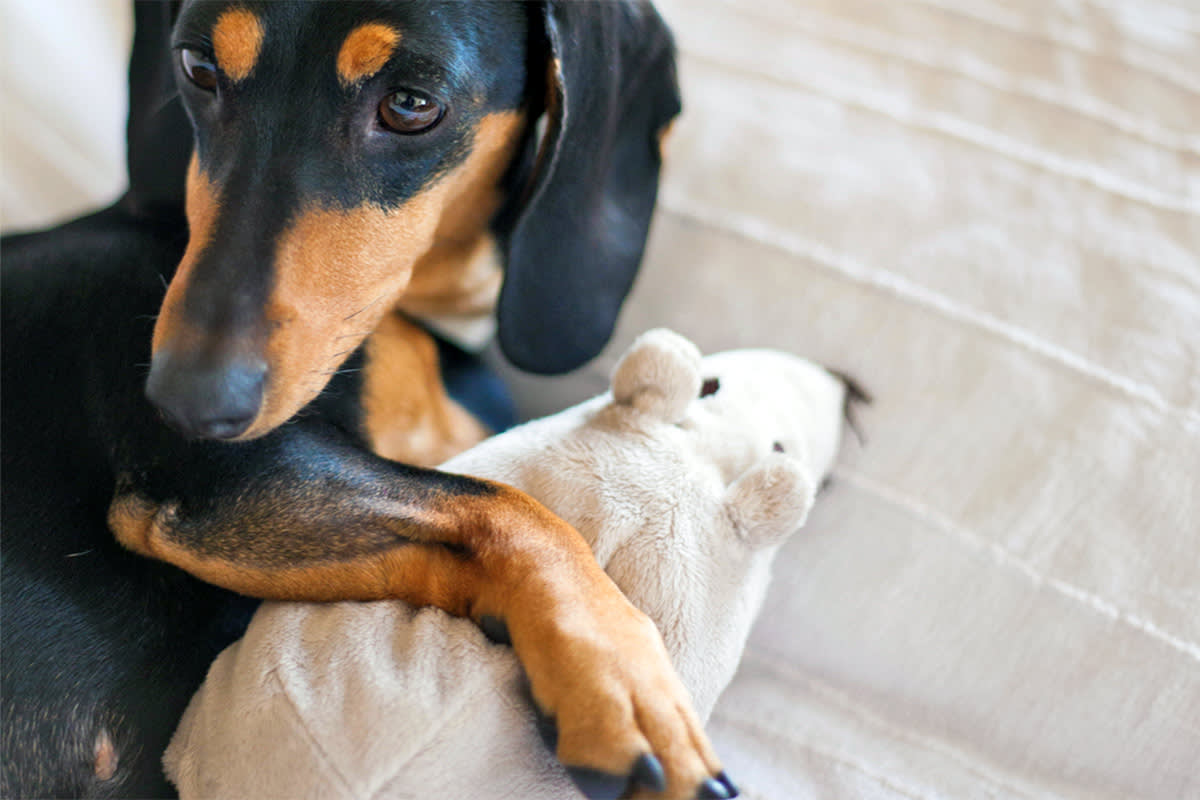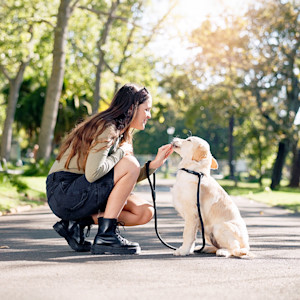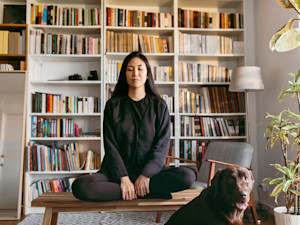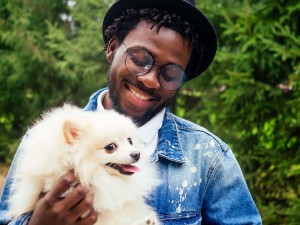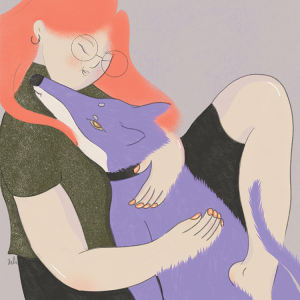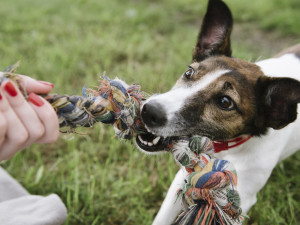Giving Your Dog More Choices Will Make Them Happier and Less Stressed
And feel more connected to you.
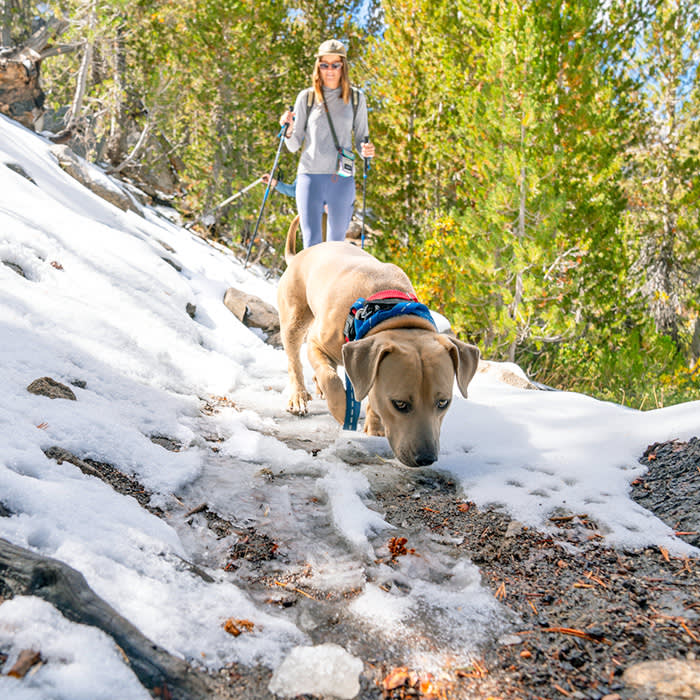
Share Article
From an early age, we’re given choices: Do we want the red toy or the blue one? Do we want apple juice or orange? Bluey or Paw Patrol? Even when this leads to toddler tantrums — especially when we want the pink toy, and that wasn’t one of the offerings — it teaches us that we have autonomy. We are our own people. Guess what? We can give that same sense of independence to our pups.
Being able to make choices can benefit dogs in so many ways. This can be as simple as presenting them options: you can hold up two toys and see which one they take, or put a treat in each hand and whichever hand they sniff opens up to give them what they selected. Another way to give them a choice is to follow their lead without interrupting them — follow the way they go on a walk without encouraging them to go in a particular direction or let them sniff for as long as they want without hurrying them along. Other opportunities for choices can be given by having multiple options available (beds, couches, rooms, and people) and simply letting them be when they make a choice about where to spend their time.
Having agency gives them a sense of control over their environment. When dogs interact with their surroundings in their own way, they are gathering knowledge and improving skills to use in the future. They become better-behaved dogs simply by having the ability to choose. Here’s how.
They are more actively engaged with what’s around them.
If animals are given agency, they tend to approach the world with the excitement of possibilities about what they can do in each new place they visit. They tend to act in an exploratory and flexible way. If they aren’t given agency, they tend to be concerned about what will happen to them and are more likely to be reactive, withdraw, and act in an inflexible way. Dogs who have control over their lives (to a degree; let’s not get wild!) are more actively engaged in what’s around them.

They are less stressed out.
A major factor that causes stress in pups is a lack of control. Dogs who have choices feel more power over their environment. In some ways, that may be obvious. If they are able to choose where to go on a walk, they can avoid things that bother them, such as lawnmowers or another dog barking in a neighbor’s yard.
In other cases, the advantage may be more subtle. They are free to investigate smells that their humans are totally unaware of or explore something new. Uncertainty leads to stress; control alleviates it, and that is good for their health.
They have better lives overall (and so will you).
A dog who gets to make choices will be able to enjoy life more, because they get to do more of what they want, when they want. Making choices also adds mental stimulation and enrichment to their lives because of the work involved in actively choosing. They learn from their choices, and that can add to their confidence.
They are less likely to experience frustration because they are not constantly being prevented from doing what they want to do. For example, if you give them the choice between a stuffed Kong or a puzzle toy, they get what they want, and you won’t have to hear their exasperated whines or barks. (Although, when it comes to that example, they may want both!) These dogs also won’t be bored, because they have the freedom to engage in activities that they find interesting, not just what you think they might like.
They’ll have better relationships with their pet parents.
Giving our dogs options gives them a way to tell us what they prefer. Then, we can respond by offering them what they want in the future. With responsive communication, they’ll be less frustrated.
A more collaborative approach to adventures, as well as in daily life, improves relationships. It’s easier on us, too, to know that we are doing what appeals to our dogs. Understanding each other is always good for our relationship, so honoring their choices improves our bond.
If they prefer one type of training treat over another, we can offer them the one they like best, and that makes them happier and makes training more effective. If we learn which way they would like to go on a walk, we know their preferred route and can act accordingly. When we know where they want to sleep or which type of dog bed they choose, we can offer them the best, most comfortable options. This makes it easier for us to be better parents to them.
It comes down to this: When dogs have the opportunity to make choices, that freedom does so much for them. They are likely to be more confident and to feel closer to their pet parents as a result. Most of all, they are going to enjoy their lives more, which is all most of us really want for our kids, erm, dogs.
References

Karen B. London, PhD, CAAB, CPDT-KA
Karen B. London is a certified applied animal behaviorist (CAAB) and certified professional dog trainer (CPDT) who specializes in working with dogs with serious behavioral issues, including aggression. She has written for a variety of magazines including The Bark, Clean Run, and the APDT Chronicle of the Dog, and has published in scientific journals including Behavioral Ecology and Sociobiology, Ethology, Ecology, and Evolution, the Journal of Insect Behavior, and Insectes Sociaux. She is the author of seven books about dog training and canine behavior, including the forthcoming My Dog's Mystery Adventure: And Other Stories From a Canine Behaviorist and Dog Trainer.
Related articles
![Woman training her labrador dog outside in the park.]()
How to Reprimand Your Dog: A Guide to Positive Reinforcement
Never, ever punish your dog. Here’s why positive reinforcement is the only way to go.
Why Is Your Dog Shaking In Their Sleep? Learn If This Is Normal
We detail everything you need to know about this common dog-sleep behavior.
![Woman meditating with her chocolate lab in the living room.]()
Why You Should Do Breathwork With Your Dog—Really
It might sound woo-woo, but it can benefit you both.
![Man hugging his fluffy white dog happily]()
Chemistry Between People and Dogs Is Real (It’s Science)
How the “love hormone” oxytocin connects us with our pups.
![Illustration of a woman hugging a dog]()
Your Dog Can Smell When You’re Stressed, New Study Says
Research finds that your pup can smell when you’ve been doom-scrolling, and they get bummed out.
![A dog tugging on a toy outside]()
The Definitive Guide to Choosing Safe Dog Toys
Tips for pet parents who want their pups to have safe fun.

